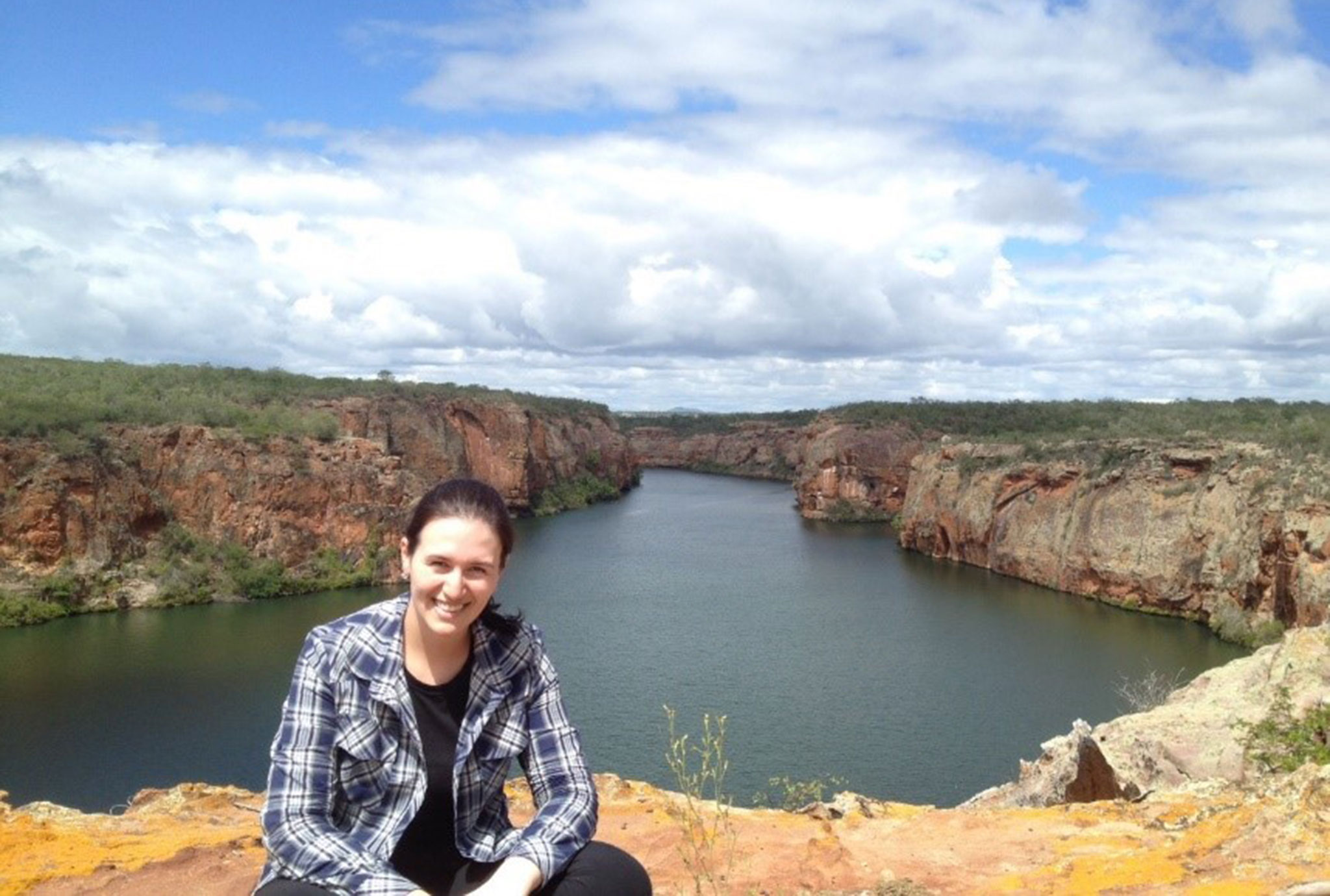Faces of LIB: Camilla Bruno Di Nizo
“Having the possibility to preserve living material from individuals after their death and potentially contribute for conservation is very exciting.“
 Camilla B. Di Nizo during a fieldtrip in Caatinga, northeast Brazil. © Camilla B. Di Nizo
Camilla B. Di Nizo during a fieldtrip in Caatinga, northeast Brazil. © Camilla B. Di Nizo
Running the cell culture lab within the Biobank in LIB, Camilla B. Di Nizo has preserved viable material from more than 100 species. Living cells are a ‘renewable’ resource and can be used for different purposes such as functional or reproductive biology. For Camilla, scientific work brings new surprises every day.
What led you to biology?
Since I was a child, I always wanted to be a scientist. I was always very curious – my parents couldn’t stand me asking so many “why?” At school, my favorite classes were always science or biology (especially laboratory classes), so I believe that one thing led to another.
What would you have become if biology hadn’t worked out?
This is a difficult question, because I don’t see myself doing anything else, but maybe I would be a writer or journalist.
What drives you as a researcher?
The chance to discover something new, the fact that science is not immutable, and we are in a constant search for knowledge. Also, the fact that, when we try to answer one question, many others appear is what moves me as a researcher.
What are the highlights of your day-to-day work?
When I can obtain cells (living material) from a fresh dead animal and later cryopreserve them not only for future ex situ conservation, but also for biotechnological approaches. In addition, my work is very integrative and I have the opportunity to work in collaboration with different people and researchers at LIB.
Are you creating a “frozen zoo”, as your colleagues at San Diego Zoo?
Yes! The colleagues in San Diego were pioneers in this field and have been cultivating cells from animals since the 70’s. They are certainly a reference for us and other cell banks around the world. The LIB started this initiative in 2019 (firstly through the FOGS project https://fogs-portal.de/en/forensic-genetics-for-species-protection-fogs-2/) and so far we have more than 100 species with cells or viable tissue frozen. In addition, our next goals are to obtain cells from invertebrates and cryopreserve gametes as well. Freezing cells in extreme low temperatures guarantee their structural and functional integrity making them the best source of material for high-quality DNA, RNA, proteins, or chromosomes. Besides, through the cells, LIB has experienced a renaissance in cytogenetics.
Will it be possible in the future – or is it being attempted at LIB – to bring extinct species back to life from cell material?
Currently, it is only possible to guarantee the conservation of critically endangered species. What has been done is to combine stem cells with assisted reproduction techniques to guarantee the reintroduction of genetic variability into the population and enhancing sustainability (genetic rescue). Furthermore, some threatened species have already been cloned by somatic cell nuclear transfer. Both approaches require frozen cells like the ones we produce at LIB. However, these two technologies are still restricted to a few model organisms and the success of assisted reproduction is still limited.
With regard to bringing an already extinct species back to life, I believe that science still has a long way to go, but with the development of new technologies, in the future it could be possible – repositories of somatic and gametic cells, though, will be indispensable.
What does nature mean to you personally? Is there a favorite place in nature?
To me, nature means life. Since I am from Brazil´s biggest city São Paulo, for me it always was very exciting and a great pleasure to spend my vacation in the countryside (mountains) or at the beach. If I have to pick up a favorite place in nature it would be the Caatinga – an endemic Brazilian biome, characterized by semi-arid tropical vegetation, where fauna and flora are adapted to a semi-arid climate. When it rains in the Caatinga, is the best smell in the world!
Crayfish, fish, butterflies. What has your very personal affection and why?
My tendency would be to say small mammals, which have been my object of study for many years. But since I joined LIB, fish and birds have shown me how interesting they are too!
How do you explain the concept of biodiversity to children?
It is all the variability (differences) present on our planet.
What do you want people to associate with the LIB ten years from now?
As a reference center for the study of biodiversity: a place that integrates our rich biological collections, the collection of tissues and environmental DNA and the living collection (cells) with genetic, molecular and morphological studies, contributing to the knowledge and preservation of the biodiversity.
What do you see as the biggest challenge in the field of environmental protection?
I believe it’s convincing people that, if everyone does a little, together they can make the difference.
What advice do you have for young biologists starting their careers?
I would say to read and study different subjects, not just those restricted to your research project.
What subfield at the LIB are you most passionate about?
I think the exhibition brings together all LIB centers and explains, in a didactic way to the public, the importance of our work.
Dr. Camilla Bruno Di Nizo, Cell Culture Manager Biobank (Zellkulturlabor)
Camilla Di Nizo studied Biology and obtained a M.Sc. degree in Biotechnology in Sao Paulo, Brazil. During this period, she went to University of Cambridge, UK, to learn cell culture and molecular cytogenetic approaches. She did her PhD in Genetics and Evolutionary Biology at University of Sao Paulo focusing on karyotype evolution and speciation in a phylogenetic context on small mammals. Since 2021, she is responsible for cryopreserve cells from different species at the Biobank of LIB.


